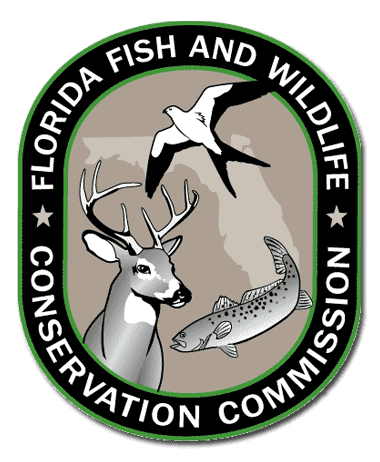Follow “Rule of Halves” in Managing for Florida Turkeys

Whether you oversee a large tract of land or own a smaller parcel, there are many wildlife management techniques you can use to help attract and keep wild turkeys on your property.
Wild turkeys, like deer, are “edge species,” because of their need for more than one type of habitat. Most of the time, with large tracts of land, this isn’t a problem because the vast landscape is diverse enough. But in the case of small-acreage, one-habitat properties, it’s up to you as the landowner to create varied, preferred habitats if you expect turkeys to use the property.
For optimal turkey habitat, most experts believe a “rule of halves” should be applied to the landscape. What that means is that half of the area (and if you own a small tract, then include surrounding properties) should be in mature forests and the other half in early-succession openings, such as fields or clear-cut and plantation-cut landscapes.
To create even better and more varied habitats for turkeys, you should offer differing age classes of forests and early-succession areas – and make prescribed burning a big part of your management plan. This will enable new growth of succulent, woody ornamentals, native grasses and weedy-type flowers.
Hardwood lowlands provide travel corridors that turkeys and deer use extensively and feel comfortable moving through. Most wild turkeys prefer to roost in trees over or near water, so it’s important to leave these areas undisturbed and free from timbering.
Buffer strips of native grasses and woody ornamentals should be left unmowed where clear-cut areas meet pine or hardwood forests. Hens require this thick understory cover for nesting.
In Florida, most hens begin laying their eggs in late March or early April and the eggs take about 25 days to hatch, so take care not to burn or mow through August. After hatching, poults will roost on the ground for the first 14 days, and during this period, approximately 70 percent of these young birds won’t survive, primarily because of predation from raccoons, hawks, coyotes, foxes and bobcats.
Attempts to control these predators are usually ineffective and economically unfeasible, so your efforts are better spent creating and maintaining good-quality brood habitat.
Good brood habitat should hold food in the form of seeds, insects and tender, new-growth vegetation for young poults to feed upon throughout the summer. It should consist of 1- to 3-foot-tall grass and weeds open enough to enable the young poults to move about, yet dense enough to provide cover from the above-mentioned predators.
There is great interest nationally in the planting of food plots for wildlife, including for turkeys. Within extensive closed-canopy forested areas, food plots and/or game feeders are essential to keeping turkeys on your property. Where an open forest structure is maintained by adequate timber thinning and the use of fire, such supplemental feeding is not as necessary because there is enough natural browse vegetation on which game can feed.
On very large tracts of land, sufficient supplemental feeding can be quite expensive. In these cases, proper use of burning and timber-thinning management are more economical ways of providing food for turkeys and other wildlife.
Food plots, though, are a lot more cost-effective at feeding game than using feeders on moderate-sized pieces of property. In cases of smaller tracts, perhaps where food plots can’t be utilized because the landscape is all lowland and you have a closed canopy, game feeders filled with corn or soybeans are your only option for attracting turkeys.
When thinking about good food plot sites, avoid excessively wet or dry areas, and don’t place them along heavily used roads to minimize disturbance and possible poaching.
Look to create these openings along an edge where upland pines meet a hardwood drain. This way, you’ll have an area where three separate habitats converge. Keep in mind that it is recommended that 2 percent to 3 percent of the land should be in these permanent openings.
The best food plots are long and narrow rectangular shapes that follow the contour of the land. When possible, create food plots where the length (longest part) runs east to west. That way, the planted crops will receive the most direct sunlight.
In the fall, cereal grains like wheat, oats and rye can be planted along with Austrian winter peas, clover and brassicas like turnips, rape and kale. Except for clover, these crops grow well in most of Florida.
Clover requires a higher soil pH – between 6.5 and 7 – and it often won’t grow in the sandy soils that make up most of our state, unless you apply enough lime to bring the pH level up. In the northern-tiered counties that border Alabama and Georgia, the soil is richer with red clay, and several varieties of clover and other legumes will grow well there.
All of the above-mentioned cool-season forages can be planted by “broadcast” method after Oct. 1. At least twice as much fertilizer should be applied. Slightly cover the seed by pulling a drag over it, and try to put your crop in the ground when the soil is holding some moisture and rain is in the forecast.
In the spring after May 1, you can plow under your “browned-up” fall crop and replace it with any combination of soybeans, cowpeas, browntop millet, sorghum or peanuts. If you can afford it, turkeys are especially fond of chufa. That, along with the other warm-season forages, can be broadcasted and planted just like the cool-weather crops.
Hopefully, using some or all of these wildlife-management practices will help bring in turkeys and increase your property’s carrying capacity for birds. If you need assistance, contact the FWC’s Landowner Assistance Program, the National Wild Turkey Federation, Natural Resources Conservation Service or your county agricultural extension agent. Here’s wishing you luck obtaining your management goals and objectives.

